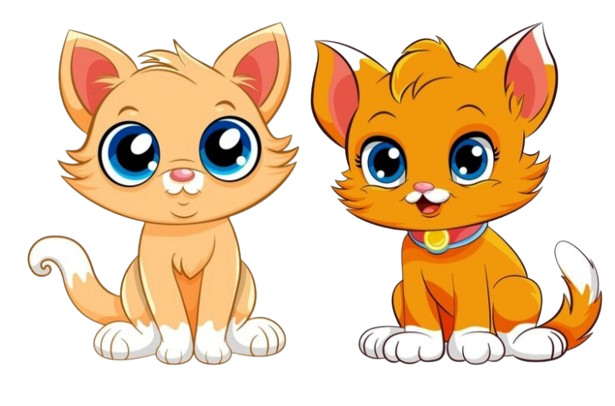History of
The Himalayan cat is, one might say, Persian with a Siamese
color. After all, they were purposefully bred in this way, that is, in the
1950s breeders just wanted to create a Persian cat with Siamese color and some
character traits.
However, in fact, the work to create this breed began back
in 1931, when Harvard Medical School researcher Clyde Keeler and breeder
Virginia Cobb began to cross Siamese and Persian cats in
order to find out exactly how the color-point gene is transmitted. Success came
a few years later when a kitten with clearly expressed characteristics of the
future breed was born. The kid was named Debutant Newton.
To date, among representatives of various teleological
organizations, there is a divergence of opinions about these pets. Breed
Himalayan cat is considered to be independent, occurred from Persians and
Siamese, while others consider it a subspecies of Persian cats. In the history
of the registry, there were even scandals related to "chimmi" - this
diminutive affectionate derivative of the "Himalayan".
In particular, the Association of Cat Lovers recognized
Himalayan as a special breed in 1957. But in 1984, the CFA Board of Directors,
under pressure from other organizations and reputable breeders, decided to
reclassify the Himalayan as a variety of Persian breed coloring.
This caused a storm of indignation among supporters of the
independence of the breed of Himalayan cats, and in a sense, the storm has not
passed to this day. After all, many registries still consider these animals a
subspecies of Persians. But the American Association of Cat Lovers and the
International Association of Cats, all the same, have come to the side of the
Himalayan and classify them as a separate breed.
Characteristics of the Himalayan Cat breed
Adaptability 10/10
Attachment to the family 10/10
Gaming activity 03/10
intelligence 06/10
General health 06/10
Wool fallout 07/10
Friendliness to children 05/10
Friendly to dogs 04/10
Love for meows 03/10
Himalayan Cat Breed information
|
The Origin |
United States |
|
lifetime |
9-15 years old |
|
size |
Average |
|
weight |
Cats: 4-6 kg, Cats: 3-5 kg |
|
The type of wool |
long-haired |
|
Color |
coloration and rich blue eyes |
|
lifestyle |
Outdoors / indoors |
Himalayan Cat price |
6000$ |
Description
If you appreciate pets' calmness, kindness, friendliness
and do not like too active and playful cats, the breed of Himalayan cat will
suit you perfectly. This is a convinced stay-at-home mom who gets attached and
loves his family and master very much and never creates unnecessary problems.
The Himalayan cat has a medium-sized torso (unless it is
overfed), a flattened snout of irregular shape, which can create the health
problems described below, and medium-sized ears. Paws are of normal length, but
because of the amount of wool, they seem short. The tail is luxurious, fluffy,
color-specific. Life expectancy is 9-15 years.
Personality
The Himalayan breed of cat is characterized by a calm
temper, poise, a good level of patience, and friendliness to others. These pets
are deprived of the negative aspects of the character of their Persian
ancestors, love a calm environment, and are not capricious. They like to lie on
the couch and generally spend time lying down and comfortably, representing a
kind of living decoration of your interior.
Moderately smart, obedient enough, and will not make a swindt
if they do not like anything in your behavior. Himalayan cat well perceives
children, if they do not push too much, and do not try to dress in different
outfits. It can be said that these animals generally avoid all sorts of
problems and emotional shakes, are not prone to pranks and prefer a calm,
measured rhythm of life and a well-established life. Accordingly, moving and
adapting to a new place is difficult.
On the other hand, if you are a lonely owner, and spend 6-8
hours a day at work, the Himalayan cat will take it quite calmly. She needs
attention, but like every normal pet, no more. Other pets Are perceived calmly
by the Himalayans.
Common Diseases
Many of the following health problems are related to the shape of the pet's muzzle, it is necessary to know.
- difficult or noisy breathing caused by compressed nostrils;
- Bad dental bite;
- eye diseases - cherry eye, entropion, and progressive retinal atrophy;
- cat hyperesthesia syndrome, nervous system disorder;
- Thermal sensitivity
- polycystic kidney disease (genetic test is available);
- predisposition to ringworm;
- oil seborrhea - itching, redness of the skin, and loss of wool.
How to take care of a
Since it's a long-haired rock, you will find regular
combing of wool twice a week, and also, you need to be ready for molting. In
addition, do not forget to brush your pet's teeth three times a week, every 10
days to prune the claws, clean the ears and eyes from dirt. Bathing can be
carried out every few months.



